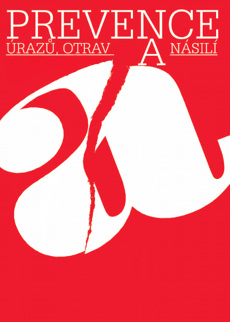SOUČASNÉ MOŽNOSTI ELIMINACE ZDRAVOTNICKÉHO MATERIÁLU S OBSAHEM FTALÁTŮ VE SPECIALIZOVANÉ PÉČI O NOVOROZENCE
CURRENT POSSIBILITIES OF ELIMINATION OF MEDICAL MATERIAL CONTAINING PHTHALATES IN THE NEONATAL CARE
Barbora Sýkorová1, Milan Hanzl1,2, Jitka Troupová1
1Neonatologické oddělení, regionální perinatologické centrum Nemocnice České Budějovice, a. s.;2Jihočeská univerzita v Českých Budějovicích, Zdravotně sociální fakulta, katedra klinických oborů
Korespondenční autor: Barbora Sýkorová (sykbar@seznam.cz)
ISSN 1804-7858 (On-line)
Full verze:
Submitted:14. 4. 2009
Accepted: 29. 5. 2009
Published online: 26. 6. 2009
Summary
The effort to eliminate medical material and devices which might constitute a potential danger to neonates has represented the latest trend in the care for premature and ill neonates in the intensive and resuscitation care units in the past few years. Medical devices made from polyvinyl chloride which constitute one-fourth of all devices used in the health care also represent potentially dangerous devices. Polyvinyl chloride is manufactured from chlorine and ethylene together with numerous additives, which assure its transparency and flexibility. Some of these additives are extremely toxic and can cause serious damage to human health and our environment. The plasticizers generally called phthalates constitute the main part of these additives. Audits of 83 medical devices, which are used in the intensive and resuscitation care for the neonates, were performed in order to check the presence of phthalates. The number of devices containing phthalates has been reduced to mere three devices so far.
Keywords: polyvinyl chloride – phthalates – medical devices – neonate – intensive care –resuscitation care
Souhrn
Jedním z trendů v péči o nedonošené a nemocné novorozence na jednotkách intenzivní a resuscitační péče je v posledních letech snaha o eliminaci zdravotnických pomůcek, které mohou být svým složením pro novorozence nebezpečné. Jedná se například o pomůcky z polyvinylchloridu, které tvoří asi čtvrtinu všech pomůcek používaných ve zdravotnictví. Polyvinylchlorid je tvořen kromě chloru celou řadou přísad, které zajišťují jeho průhlednost a pružnost. Mnohé z nich jsou mimořádně jedovaté a mohou velmi závažným způsobem poškodit lidské zdraví a životní prostředí. Patří mezi ně především změkčovadla obecně označovaná jako ftaláty. Na základě provedených auditů jsme identifikovali celkem 83 pomůcek používaných v intenzivní a resuscitační péči o novorozence. Do současné doby jsme zredukovali počet pomůcek s obsahem ftalátů na pouhé 3 položky.
Klíčová slova: polyvinylchlorid – ftaláty – zdravotnické pomůcky – novorozenec – intenzivní péče – resuscitační péče
Literatura
1. Popp, J. A.: Toxicol Ind Health. 1987 Jun. 3(2):151–163.
2. Hellwig, J.: Food Chem Toxicol. 1997 May. 35(5):501–512.
3. Doull, J.: Regul Toxicol Pharmacol. 1999 Jun. 29(3):327–357.
4. Richmond, R. E.: Carcinogenesis. 1996 Aug. 17(8):1647–1655.
5. Preliminary Report On The Safety of MEdical Device Contanining DHEP- Plasticized PVC or Other Plasticizetrs On NEonates and Other Groups Possibly at Rist http://ec.europa.eu/…ns-05-en.htm.
6. Wams, T. J.: Sci Total Environ. 1987 Oct. 66:1–16. Review.
7. Calafat, A. M.: Pediatrics. 2004 May. 113(5):e429–434.
8. Pak, V. M..: MCN Am J Matern Child Nurs.2007 Jul-Aug.32(4):244–249.
9. Pak, V. M.: Neonatal Netw. 2006 Nov–Dec. 25(6):447–449.
10. Mair, A. A.: Otolaryngol Head Neck Surg. 2009 Jan. 140(1):13–14.
11. Hines, E. P.: SE.Environ Health Perspect. 2009 Jan. 117(1):86–92. Epub 2008 Aug 22.
12. Buchta, C.: Transfusion. 2005 May. 45(5):798–802.
13. Subotic, U.: J Pediatr Gastroenterol Nutr. 2007 Jan. 44(1):71–76.
14. Takatori, S.: Int. J.Pharm.2008 Mar 20. 352(1–2):139–451.
